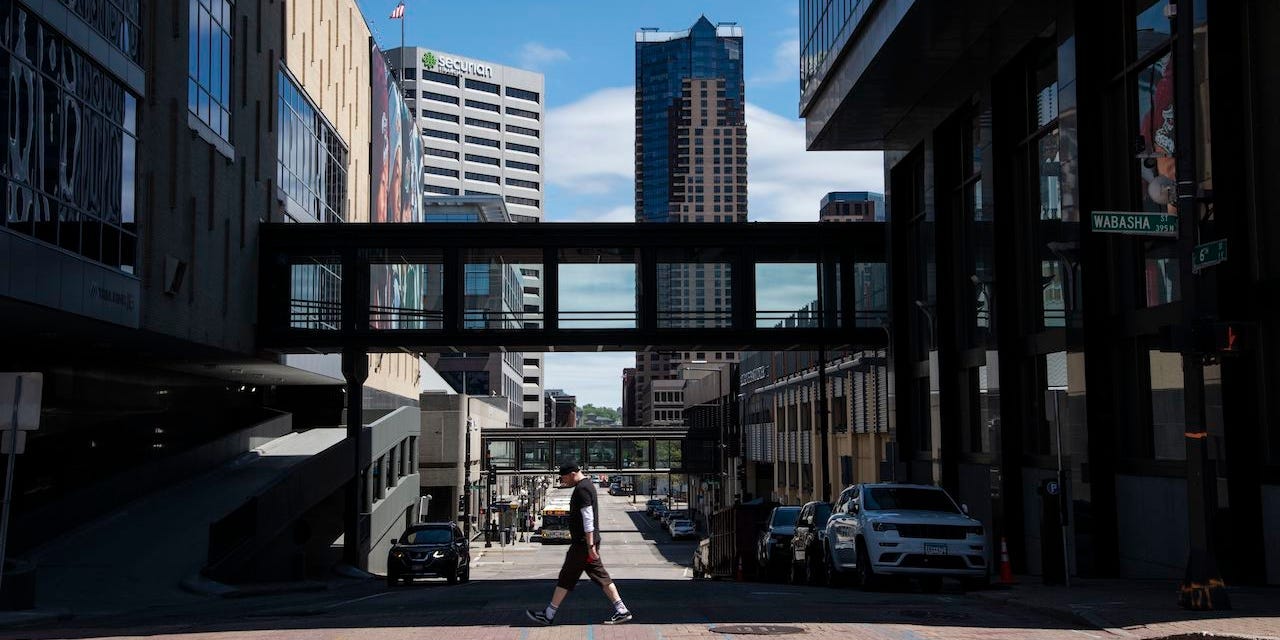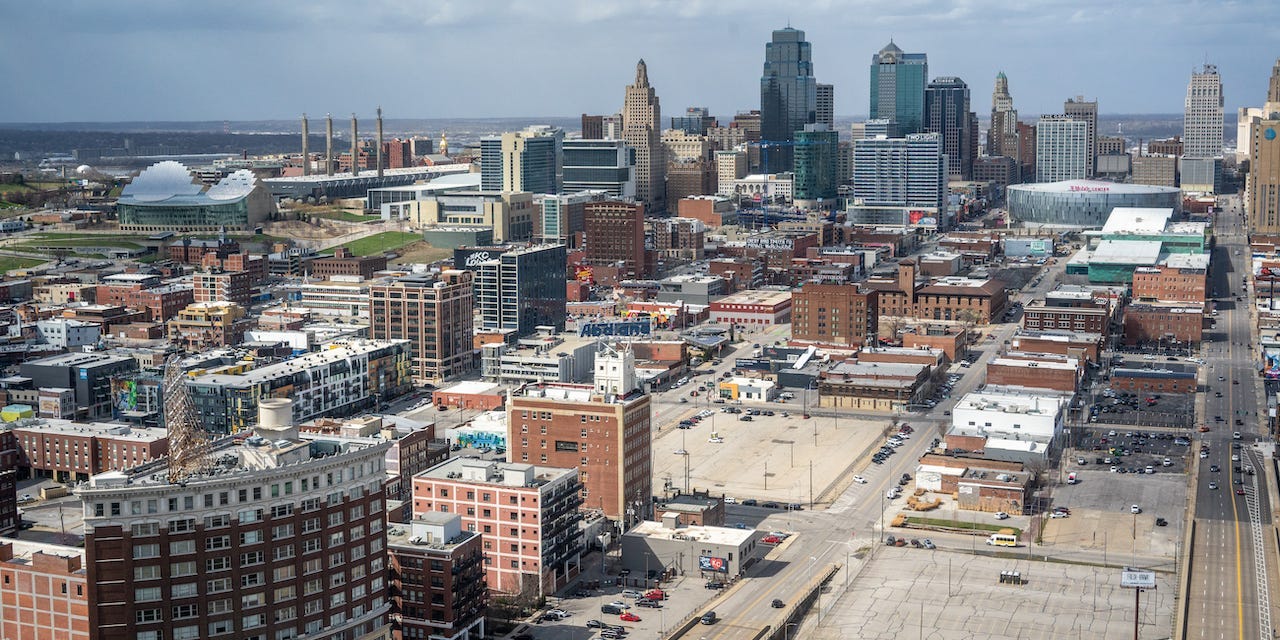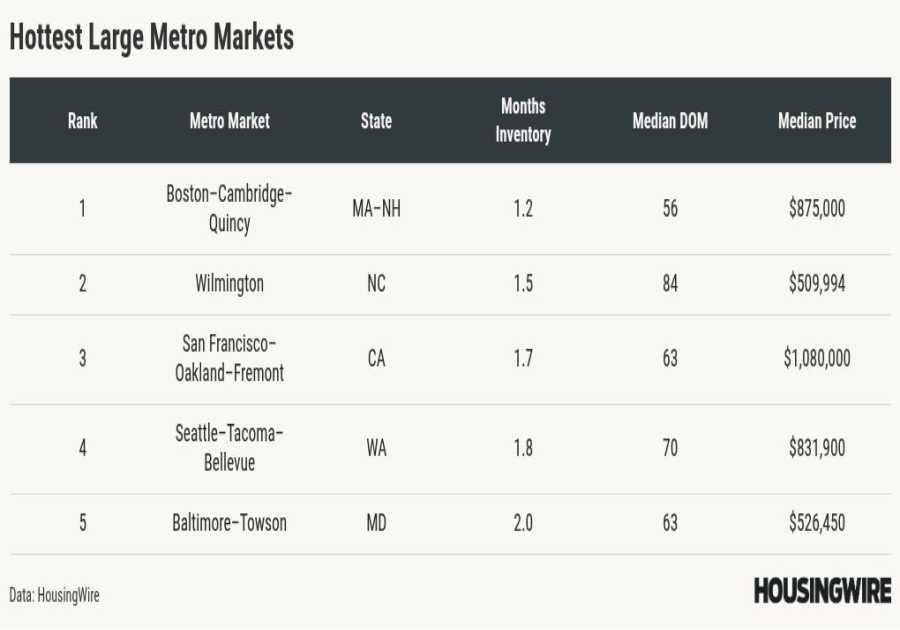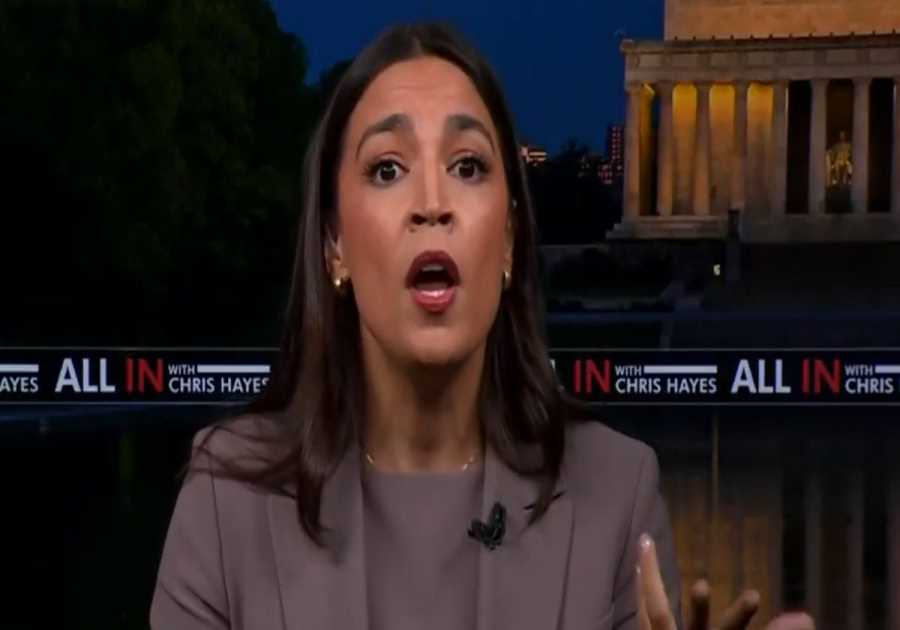Getty Images; Alyssa Powell/Insider
Work from home is crushing Midwestern downtowns
You may have heard that America's cities are in trouble. From the "death of downtowns" to the "urban doom loop," the plight of America's superstar metros — and their central business districts in particular — have been a frequent source of concern for economists, politicians, and commentators.
Most of the concern has been focused on coastal cities like San Francisco and Seattle, which have seen the usual stream of commuters shrink to a trickle due to remote work's hold on the white-collar workforce. But Midwestern cities are also facing a crisis of their own — struggling to attract workers, residents, and visitors to their downtowns. And while many coastal metros experienced a "golden age" in the decade before the pandemic, cities in America's heartland have been struggling since well before COVID came around.
In order to pull out of their tailspin, economists and urban planners say many Midwestern cities need to get serious about improving amenities and boosting quality of life in their downtowns. Instead of being places where people are forced to go to work, leaders need to make their center cities into a destination that people actually want to visit.
"What I really think it comes down to in these places is that there's nothing special about any of the downtowns in any of these cities that would be attractive to new residents," Michael Hicks, a professor of economics and business research at Ball State University in Indiana, told Insider. "The cities just don't have the fundamental amenities that would attract people."
Hollowed out
A good way to gauge just how much trouble Midwestern cities are in is to take a look at how many people their downtowns are actually attracting. Standing in the middle of the city square and counting people can be a bit tough though, so researchers at the University of Toronto have been analyzing anonymized cellphone data for the past few years to track the number of people physically present in central business districts each day. The granular, individual-level data provides a fuller picture of downtown vitality — both before and after the pandemic — than other measures such as office vacancy rates and mass-transit ridership. The conclusion the study draws for the heartland is bleak. Five of the bottom 10 cities in the tracker's most recent data, which measured the period from December 2022 to March 2023, were in the Midwest: St. Louis, Indianapolis, Minneapolis, Cleveland, and Kansas City, Missouri. Nine of the 13 Midwestern cities tracked in the study were in the bottom half of the rankings.
Other indicators of central business district health — from office workers to vacant real-estate space — are similarly stark for many of these cities. Jacob Frey, the mayor of Minneapolis, recently said he expects his city's downtown workforce will max out at about 75% of its pre-pandemic numbers, and a recent study showed that 21.2 million square feet of office space in the city is sitting vacant. In April, Salesforce announced it would give up one-quarter of its office space in the Indianapolis Salesforce Tower, Indiana's tallest building. The Midwest as a whole has also struggled to attract new residents and hold onto its existing residents in recent years. Between April 2020 and July 2022, the region saw a net decline of more than 400,000 residents. And things could get even worse for downtowns if they fall into the so-called "urban doom loop." Commercial property taxes make up a large chunk of many city budgets, so as office vacancies rise, the decreased revenue could force leaders to curtail municipal services or make cuts to key programs. Declining services and quality of life in turn pushes residents out, leading to a self-reinforcing exodus. Without serious changes, these midsize cities in the middle of the country could be quietly sliding into oblivion.
"The writing on the wall is not great," Karen Chapple, the director of the School of Cities at the University of Toronto and the author of the downtown recovery study, told Insider.
'The collapse of the Midwest'
The original sin that led to the Midwest's current predicament can be traced back to boneheaded choices made 70 years ago. In the early part of the 20th century, Midwestern cities boomed — attracting workers and families seeking out manufacturing jobs and education. Downtowns were bustling places for shopping, living, and working.
That all changed in the 1950s. Many Midwestern cities relied on a single industry or even a single company to buttress its economy. Cleveland had the steel industry, Detroit was built by autos, and Akron was home to tire manufacturers. So in order to keep businesses from leaving town, leaders began to single-mindedly focus on attracting businesses — even if it meant making peoples' lives harder.
"For the second half of the 20th century, most Midwestern cities really focused on bending over backwards to accommodate businesses," Hicks said. "They bulldozed neighborhoods, they did eminent domain for all kinds of highways to get the products moved from factory to customer more quickly. And they neglected the fundamentals that people have liked about cities for 3,000 years, which is you can meet with people, you can walk to a place to eat, it's safe."

Michael Siluk/Getty Images
This urban transformation turned Midwestern downtowns into "nothing but skyscrapers and highways," Amanda Weinstein, a professor of economics at the University of Akron, told me. "The thought was, cities are just for jobs and that's all they really are."
After years of being ignored, workers' community ties began to fray and they started to look for greener pastures. Many Rust Belt residents left for the Sun Belt, Weinstein said, which promised affordability and a higher quality of life. Even those central-city residents who weren't lured by warmer locales eventually migrated out of the city to leafier surrounding suburbs.
"The collapse of the Midwest is really the story of, 'As soon as the job went away, I got the hell out of this shitty town,'" Hicks said.
Given this long history of out-migration and neglect, it's not surprising that Midwestern downtowns that were struggling before the pandemic are having an even harder time now, Tracy Hadden Loh, a fellow at the Brookings Institution who studies downtowns and urban real estate, told me.
"The pandemic is a huge disruption that has produced some real paradigm shifts, but the vast majority of what it's done is just drastically accelerate existing trends," she said.
'A people problem, not a business problem'
If Midwestern cities have any hope of reversing this downward spiral, experts told me, then leaders will need to prioritize people over business. If a diverse set of people live in or frequent downtowns, they'll attract a variety of employers and build a foundation that can weather shocks to the system, such as a pandemic or the death of an industry.
"What we're seeing increasingly is that jobs are following people and where people want to be," Weinstein said. "We have to compete to get the talent that business needs."
In order to draw in new residents, Hicks told me, there are two big things that need to be addressed: adequate housing and services. Downtowns should create an environment that attracts people, and that will in turn draw in employers and boost the economy. Hicks and Weinstein wrote in a Brookings Institution report that the Midwest's history of embracing loose regulations and tax incentives for businesses have hurt the provision of services that would attract people to live in downtowns.
"I don't think there's a commercial fix to this for cities," Hicks said. "It's a people problem, not a business problem."
Quality of life is largely determined by the services and amenities available in a community. These include schools, safe public spaces, libraries, playgrounds, transportation and relatively short commute times, and restaurants and retail. Midwestern cities have largely failed to invest in these kinds of amenities, leaving their downtowns devoid of anything but office space and industrial parks. To bring in new residents and visitors rather than just workers, they need these attractions.
"If office workers are coming downtown less, but college students are willing to come downtown more, what about literally putting a college in your downtown?" Hadden Loh said. "This is something that cities are increasingly looking at." She pointed to Phoenix as an example. Over the past couple of decades, the city has made major investments in revitalizing its core, including a new downtown campus for Arizona State University.
It's a people problem, not a business problem
Even in situations where Midwestern cities have preexisting natural amenities — like mountains or lakes — that lend themselves to redevelopment, they've failed to capitalize on those advantages. Take downtown Cleveland, where Weinstein said the city has allowed its natural waterfront along Lake Erie to be "forgotten." Despite its potential, the waterfront isn't walkable and offers little by way of restaurants or attractions. And given the city's long history of prioritizing industry, residents are concerned about the lake's water quality.
"The number of restaurants we have that overlook the lake I can count on one hand," she said.
In an effort to give the area a face-lift, the city is currently considering potentially closing Burke Lakefront Airport, a city-owned, 450-acre regional airport situated on prime waterfront real estate. The airport largely serves private business and medical flights and has recently seen its traffic plummet. Closing the airport and redeveloping the waterfront into an amenity-rich area with a mix of housing and commercial space would be a "big game changer" for Cleveland, Weinstein said.
Housing is also a crucial piece of a thriving downtown. Cities need to attract residents, not just tourists and workers. Downtown areas might need to be rezoned to allow developers to come in and build housing. And cities that are struggling to attract workers back downtown might have an easier time attracting residents in a hot housing market. Some Midwestern cities have already begun incentivizing pricey conversions of office space to residential property.
Offering those two elements in tandem — higher-quality services and a larger stock of housing — can reverse the "doom loop" and instead create a positive feedback loop. "Oftentimes, the best way to improve your housing stock is to focus on making sure you have good clean parks, you've got high-quality public safety and services," Hicks said.
Midwestern downtowns need to get away from the nine-to-five office district of the past and embrace a diverse, multiuse, high-amenity model.
"In the long term, I think what we're learning from the places that have bounced back is that you just want to make sure that you have diverse, 24/7 downtowns, and we kind of give up this idea of the downtown office district as being something that is a relic of the early 20th century," Chapple said. "We're in a different world now."

Edwin Remsberg/Getty Images
A vision for the future
It's not all doom and gloom in the Midwest. As downtowns have struggled, many of the suburbs surrounding Midwestern cities have long been thriving. Both Weinstein and Hicks say this is because they've focused on livability: creating safe, walkable neighborhoods with green spaces and strong school systems.
"The suburbs have it figured out," Weinstein said. "I've heard people kind of pejoratively say, like, 'Oh, the suburbs just do so well because they cater to families.' And I'm like, yes. You just found your perfect economic development strategy: cater to families, cater to residents."
The pandemic exacerbated this pull to the suburbs. Hicks said the typical household that moved out of places like downtown Indianapolis or Chicago was a 26-year-old married couple without kids.
"They want to get a dog, they want to start a family, and so they said, 'Well, you know, mortgage rates are really low. Let's just get the hell out of this apartment,'" he said.
If Midwestern cities want their downtowns to survive, then the center cities may need to become more like the suburbs that have bled them dry. One place that has figured out this equation is the city of Columbus. While Ohio is losing residents, Columbus has grown over the past two decades and the metro area even gained residents during the height of the pandemic. And unlike so many other Midwestern cities, the University of Toronto study found that more people are now visiting Columbus' downtown than in 2019.
The reasons for the city's success come down to the quality of life it delivers. The Columbus city government invested heavily in amenities, ranging from a strong school system to a walkable downtown with plentiful restaurants and bars and even an outdoor drinking zone. Housing is relatively affordable, commute times are short, and the city's public schools are strong. The city's also full of students — it's home to dozens of schools including the Ohio State University's flagship campus. And Columbus isn't resting on its laurels. Last fall, the city rolled out a strategic plan for its downtown, which includes investing in public transit, removing parking lots, and building bike and pedestrian infrastructure to attract new residents and tourists.
The high concentration of college-educated workers has attracted a diverse set of high-paying jobs and made the city a hub for tech companies and startups. The chip-manufacturing giant Intel broke ground last year on a massive complex 20 minutes outside Columbus' downtown that will house at least two semiconductor factories. The company's leadership cited the city's abundant, diverse talent pool as a major reason why it chose the Ohio capital for its $100 billion investment.
"It's also around schools and has a population of folks that are very tied to the Midwest," Intel's executive vice president, Keyvan Esfarjani, told TechCrunch last year. "They want to be there, they want to solve problems."
Companies "models are telling them this is where college-educated people are moving," Hicks said, so these corporations are starting to chase that workforce to places like Columbus. "They went there because the people are there, which is the big economic-development lesson."
Columbus' experience shows a path forward for the region: If the people come, the rest will follow.
Eliza Relman is a policy correspondent focused on housing, transportation, and infrastructure on Insider's economy team.
Read More
By: [email protected] (Eliza Relman)
Title: The 'doom loop' hammering Middle America
Sourced From: www.businessinsider.com/midwest-america-cities-downtown-crisis-office-apocalypse-urban-doom-loop-2023-6
Published Date: Thu, 22 Jun 2023 09:58:00 +0000
Did you miss our previous article...
https://trendinginbusiness.business/politcal/amazons-project-iliad-the-juiciest-highlights-from-the-ftcs-prime-lawsuit
.png)





